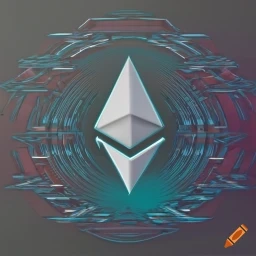Ethereum's MEV Challenge: Navigating the Complex Landscape of Decentralization and Profit Maximization

This website uses cookies
We use Cookies to ensure better performance, recognize your repeat visits and preferences, as well as to measure the effectiveness of campaigns and analyze traffic. For these reasons, we may share your site usage data with our analytics partners. Please, view our Cookie Policy to learn more about Cookies. By clicking «Allow all cookies», you consent to the use of ALL Cookies unless you disable them at any time.
Ethereum, the pioneering blockchain platform, has been a beacon of innovation in the decentralized world. Its smart contract capabilities have revolutionized how applications are built and deployed. However, as with any evolving technology, Ethereum faces challenges. One such challenge that has recently come to the forefront is the issue of Maximal Extractable Value (MEV).
MEV refers to the potential profit that miners or validators can extract from their ability to freely reorder, include, or exclude transactions within the blocks they produce. In simpler terms, it's the value derived from the power to decide the sequence of transactions in a block.
This might sound benign, but in practice, it has led to some concerning behaviors. Miners, aiming to maximize their profits, might engage in practices like transaction reordering, front-running, or even censoring certain transactions. These actions can have significant implications for users and the broader Ethereum ecosystem.
Trust and Decentralization: Ethereum's value proposition lies in its decentralized nature. However, if a few miners or mining pools can influence transaction order to their benefit, it challenges this decentralization. Users might start to question the fairness of the system, leading to reduced trust.
dApp Functionality: Decentralized applications (dApps) rely on the Ethereum blockchain's predictability and fairness. MEV practices can disrupt the intended functionality of these dApps, especially those involving financial transactions or decentralized exchanges.
Economic Concerns: MEV can lead to unpredictable transaction fees. Users might have to pay higher fees to ensure their transactions are processed in a timely manner, leading to an uneven playing field.
The Ethereum community is acutely aware of the challenges posed by MEV. Addressing this issue requires a combination of technical solutions, community engagement, and perhaps even a rethinking of some foundational blockchain principles.
Protocol Upgrades: Ethereum 2.0, the much-anticipated upgrade, promises to introduce Proof of Stake (PoS) as its consensus mechanism. PoS might mitigate some MEV concerns, especially those related to miner centralization. However, it's not a panacea, and other solutions might be needed in tandem.
Transaction Privacy: One way to deter MEV practices is to enhance transaction privacy. If miners can't ascertain the specifics of a transaction, they can't prioritize it based on potential MEV gains.
Alternative Fee Models: Rethinking the transaction fee model might also be a solution. EIP-1559, a recent Ethereum proposal, aims to make transaction fees more predictable. While it doesn't address MEV directly, it's a step in the right direction.
Community Initiatives: The Ethereum community is its biggest strength. Initiatives like Flashbots are exploring ways to make MEV transparent and fair. By creating a separate communication channel for traders to bid for transaction placement, it aims to make the MEV process more transparent.
Ethereum's MEV challenge is a testament to the complexities of building a decentralized, secure, and fair blockchain platform. While MEV poses significant challenges, it also offers the Ethereum community an opportunity. An opportunity to come together, innovate, and ensure that Ethereum remains the gold standard in the blockchain world.
The road ahead is uncertain, but with a collaborative approach, the future is promising. As Ethereum continues to evolve, it will undoubtedly find ways to navigate the MEV challenge, ensuring a fair, transparent, and decentralized ecosystem for all its users.
